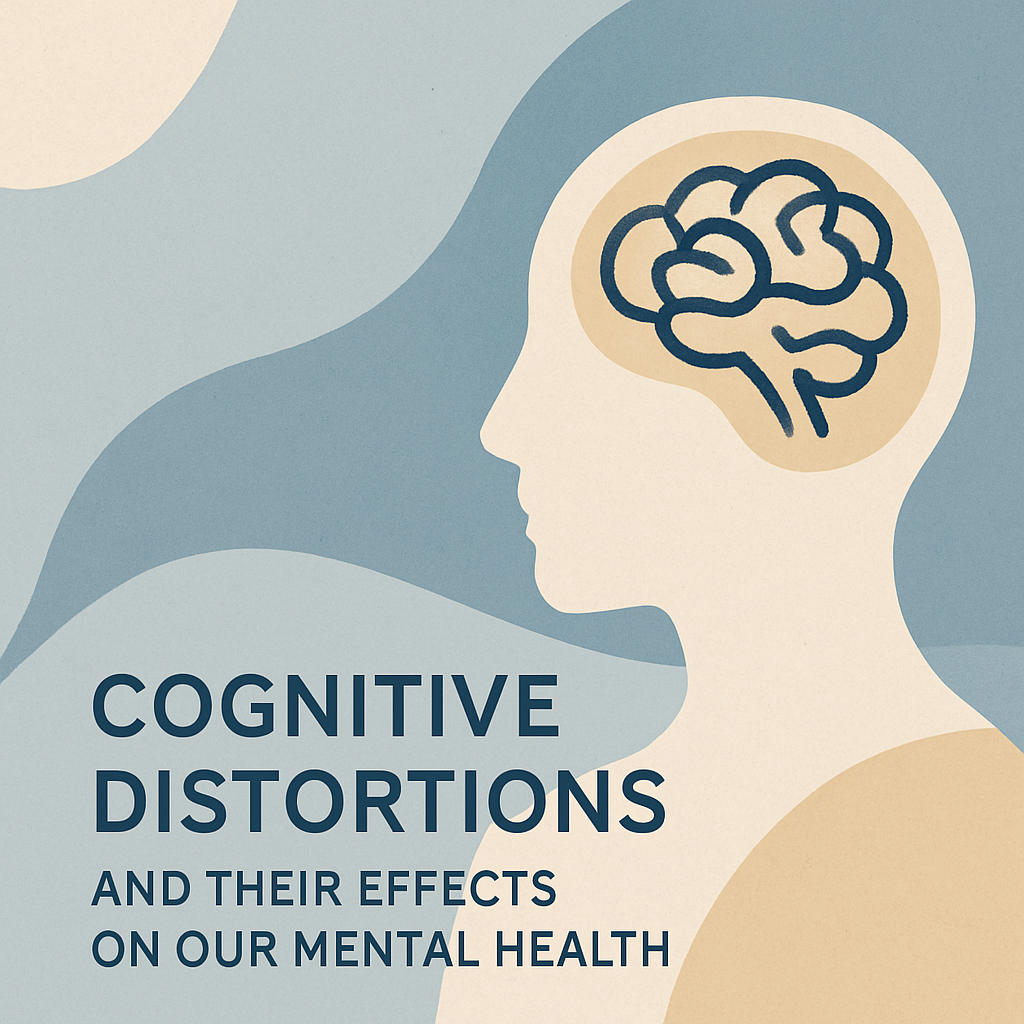Cognitive Distortions and Their Effects on Our Mental Health

Decoding Cognitive Distortions
Have you ever caught yourself thinking,
“I’m such a failure,”
“They must hate me,”
“They think I’m fat,”
or even,
“Do you even like me?”
...even when there’s no actual truth or evidence behind those thoughts?
That’s the subtle — and powerful — world of cognitive distortions. These are mental shortcuts that quietly twist our perception of reality. They can affect our mood, confidence, relationships, behaviour, and ultimately, our sense of self.
What Are Cognitive Distortions?
Cognitive distortions are irrational patterns of thinking that often show up during times of stress, anxiety, or depression. They feel very real — but they aren’t.
These thoughts usually stem from the way our brain tries to simplify information or protect us from perceived threats. In doing so, it may distort reality, making us believe something negative that isn’t necessarily true. Over time, these distortions can influence how we think, feel, and behave — often in ways that don't serve us.
10 Common Types of Cognitive Distortions
- All-or-Nothing Thinking: Seeing things in black-and-white terms. “If I don’t succeed completely, I’m a total failure.”
- Overgeneralization: Drawing broad conclusions from a single event. “I didn’t get the job — nothing ever works out for me.”
- Mental Filtering: Focusing only on the negative and ignoring the positive. “I made one mistake — so the whole presentation was a disaster.”
- Disqualifying the Positive: Dismissing good experiences by labeling them as flukes. “They were just being polite — they didn’t really mean it.”
- Jumping to Conclusions: Assuming what others are thinking (mind reading) or expecting the worst (fortune telling).
- Catastrophizing: Expecting the worst-case scenario. “What if I panic during the interview and mess everything up?”
- Emotional Reasoning: Believing that your feelings must reflect facts. “I feel unlovable, so I must be.”
- Should Statements: Placing unrealistic demands on yourself or others. “I should always be strong.”
- Labeling: Defining yourself or others by a single mistake. “I’m so stupid.”
- Personalization: Blaming yourself for things outside your control. “They’re upset — it must be because of me.”
Why This Matters
These thoughts aren't just passing worries — they can trigger and reinforce ongoing cycles of low self-esteem, anxiety, and depression. When we believe them, we behave in ways that can make those beliefs feel even more “true.”
It’s a loop. And it’s one we can interrupt.
How to Work with Cognitive Distortions
- Notice them: Awareness is the first step. Pause and ask yourself, “Is this thought 100% true?”
- Challenge them: For example, instead of “I always mess up,” try: “Sometimes I make mistakes, but I learn and grow from them.”
- Be kinder to yourself: Give yourself the same understanding you'd offer a friend.
- Seek support: Talking to a therapist — especially one trained in Cognitive Behavioral Therapy (CBT) — can help you identify, reframe, and manage these patterns.
In Closing
Your thoughts are powerful, not accurate. You are not your thoughts. You are the one observing them. You have the power to pause, question, and gently re-shape the ones that no longer serve you. You can learn to identify and challenge cognitive distortions, to shift your mindset and enjoy better emotional well-being.
You are not your thoughts.
You are the thinker who can change them.
So be wise and re-think.
- Shiv